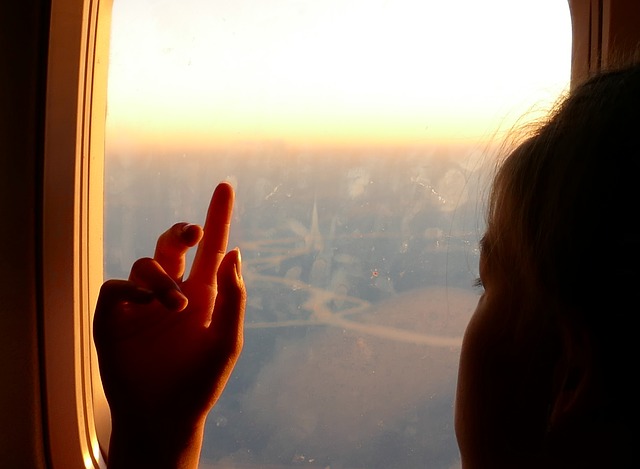Yesterday, I read an online article on AFAR Magazine – How to Keep a Flight from Wreaking Havoc on Your Skin.
Though the reminder is always helpful, I already knew how important it is to moisturize your skin and drink plenty of water when flying. I also knew about the germs on planes and the need to wash ones hands and use sanitizers.
But when I got to this paragraph, I did a double-take:
Protect from the sun
. . . “A study showed that UV exposure on airplane pilots over a one-hour flight was equivalent to lying in a tanning bed for 20 minutes! So, if you are lucky enough to get a window seat, remember to wear sunscreen or a moisturizer with SPF . . .
WHAT? I had no idea, did you?
Of course, I googled, and AFAR wasn’t the first to report on UV exposure in airplanes. See, for example, these articles in Travel & Leisure and Conde Nast Traveler.
So, don’t pack away your sunscreen if you’ve got a window seat on a sunny day! And don’t forget the kids – you know how they love to gaze out airplane windows!

 A New York frequent flyer who elegantly combines her passions for worldwide travel, running a gazillion marathons all over the globe and staying fit ... without sacrificing her fancy for good wine and food.
A New York frequent flyer who elegantly combines her passions for worldwide travel, running a gazillion marathons all over the globe and staying fit ... without sacrificing her fancy for good wine and food.
Intriguing, so I did a little more research. The study they appear to be referencing (not citing, as there is not citation given in the article) was done in 2015 on a general aviation turboprop (Socata TBM850). The results indicate that UV-B is effectively blocked, but that UV-A is allowed through the acrylic windshield at a rate about a third that of lying in a tanning bed. The findings are interesting, but needs to be taken with a grain of salt, as commercial airliner windshields can be around 2-3″ thick and weight upwards of 100+ lbs.
I believe side windows, however, are primarily polycarbonate or acrylic, so it would seem that the warning for passengers is not without merit.
https://www.ncbi.nlm.nih.gov/pmc/articles/PMC4476387/
thank you for looking into this. One question that came to mind was how effectively the window dimmers in planes such as 787s can block the UV rays.